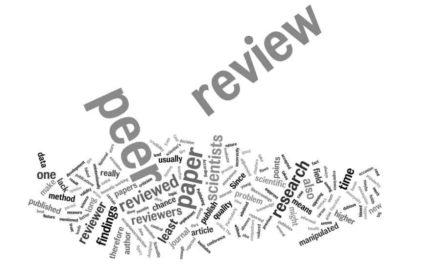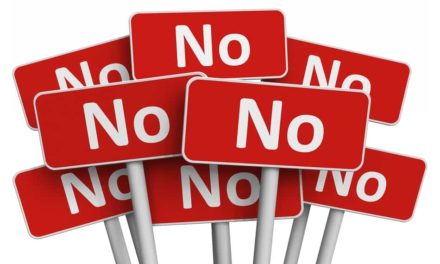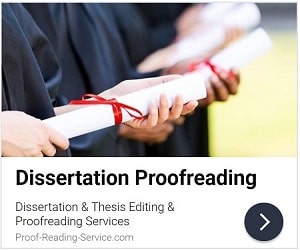Introduction
The peer review process is an essential part of academic publishing, ensuring that research papers meet high standards of quality, accuracy, and clarity before publication. However, receiving reviewer comments—especially when they require significant revisions—can be daunting for authors.
A well-structured response letter helps demonstrate an author’s commitment to improving the manuscript, addressing concerns professionally, and increasing the chances of acceptance.
This article provides a step-by-step guide on how to respond to peer reviewer comments effectively, along with a free example letter to help researchers craft a compelling response.
1. Why Is Responding to Peer Reviewer Comments Important?
Addressing reviewer feedback professionally is critical because:
- It shows willingness to engage in constructive revisions.
- It helps clarify misunderstandings and strengthen the manuscript.
- A well-structured response increases acceptance chances.
- It demonstrates academic integrity and respect for the peer-review process.
Journals expect authors to respond systematically, ensuring that each concern raised by reviewers is acknowledged and addressed in the revised manuscript.
2. Key Components of a Response Letter
A strong response to reviewer comments includes:
2.1. Formal Salutation
Begin by addressing the editor and reviewers courteously.
Example:
Dear [Editor’s Name],
We appreciate the time and effort that you and the reviewers have taken to evaluate our manuscript, “[Title of Paper].” We are grateful for the valuable feedback and have carefully considered all the comments.
2.2. Thanking the Reviewers
Express gratitude for their constructive suggestions.
Example:
We sincerely appreciate the reviewers’ insightful comments, which have helped us improve the clarity and impact of our study.
2.3. Point-by-Point Responses to Reviewer Comments
Each reviewer’s comment should be clearly presented, followed by a detailed response.
- Reiterate the reviewer’s comment (in bold or italics for clarity).
- Explain the changes made in response.
- If a suggestion is not implemented, provide a well-reasoned explanation.
2.4. Highlighting Changes in the Revised Manuscript
Refer to specific sections, paragraphs, or page numbers where changes have been made.
Example:
Reviewer 1 Comment: “The methodology section lacks clarity regarding sample selection.”
Response: Thank you for your comment. We have now expanded the methodology section (Page 5, Paragraph 2) to clarify the sample selection process.
2.5. Professional and Respectful Tone
- Avoid defensive or confrontational responses.
- Acknowledge constructive criticism professionally.
2.6. Conclusion and Final Statement
End with a brief summary and an expression of appreciation.
Example:
We hope our revisions adequately address the reviewers’ concerns. Thank you for considering our manuscript, and we look forward to your feedback.
3. Free Example Letter for Responding to Peer Reviewer Comments
Subject: Response to Reviewer Comments – Manuscript ID [XXXX]
Dear [Editor’s Name],
We appreciate the opportunity to revise our manuscript, “[Title of Manuscript]”, for consideration in [Journal Name]. We are grateful to the reviewers for their insightful feedback, which has helped us refine and strengthen our study.
Below, we provide our point-by-point responses to the reviewers’ comments. All revisions have been made in the manuscript, with tracked changes highlighted for clarity.
Reviewer 1 Comments and Responses
Comment 1: “The introduction does not clearly explain the research gap.”
Response: Thank you for your feedback. We have revised the introduction (Page 2, Paragraph 3) to provide a more detailed explanation of the research gap. We have also cited relevant studies to strengthen the background.
Comment 2: “The statistical analysis section lacks justification for the chosen methods.”
Response: We agree with this comment. We have now included a justification for our statistical methods in Section 3.2 (Page 7, Paragraph 2).
Reviewer 2 Comments and Responses
Comment 1: “Figure 3 is unclear. Please provide a higher-resolution version.”
Response: We have replaced Figure 3 with a higher-resolution version and have also improved the labeling for better clarity.
Comment 2: “The discussion section does not adequately compare findings with previous research.”
Response: Thank you for this valuable suggestion. We have expanded the discussion section (Page 12, Paragraphs 1-3) to compare our findings with similar studies.
Final Statement
We appreciate the reviewers’ constructive feedback, which has significantly improved our manuscript. We hope that these revisions address all concerns and that our manuscript is now suitable for publication.
Best regards,
[Your Name]
[Your Institution]
[Your Email]
4. Best Practices for Responding to Reviewer Comments
4.1. Be Thorough and Address Every Comment
- Ensure all reviewer concerns are addressed.
- Number the responses to match the reviewer’s comments.
4.2. Be Professional and Respectful
- Avoid emotional or defensive language.
- If you disagree with a comment, provide a rational and evidence-based explanation.
4.3. Highlight Key Changes in the Manuscript
- Specify where revisions were made (section, page, or paragraph number).
- If additional citations were included, mention them explicitly.
4.4. Keep Responses Concise but Detailed
- Do not repeat explanations unnecessarily.
- Provide direct, well-structured responses.
4.5. Use Formatting for Clarity
- Use bold or italics to separate reviewer comments from responses.
- Use bullet points for better readability.
5. Common Mistakes to Avoid
5.1. Ignoring Reviewer Comments
- Failing to respond to a reviewer’s concern may lead to rejection or further revisions.
5.2. Being Defensive or Argumentative
- Even if you disagree, be polite and provide evidence-based counterarguments.
5.3. Failing to Explain Changes Clearly
- Do not simply state, “We revised the manuscript”—explain what was changed and where.
5.4. Making Excessively Long Responses
- Keep responses clear and concise—reviewers do not need lengthy justifications.
6. Final Checklist Before Submission
✔ Have you addressed all reviewer comments?
✔ Are your responses clear, professional, and detailed?
✔ Have you formatted responses correctly (bold, italics, numbering)?
✔ Are all revisions highlighted in the manuscript?
✔ Did you double-check for spelling and grammar errors?
Conclusion
Writing an effective response letter to peer reviewer comments is crucial for successfully revising and resubmitting a manuscript. A well-structured response demonstrates:
- Professionalism in addressing feedback.
- Willingness to improve research quality.
- Attention to journal and reviewer concerns.
By following the examples and best practices outlined in this article, researchers can improve their chances of acceptance and publication success.
A strong, well-organized response can turn a revision request into an acceptance letter!














